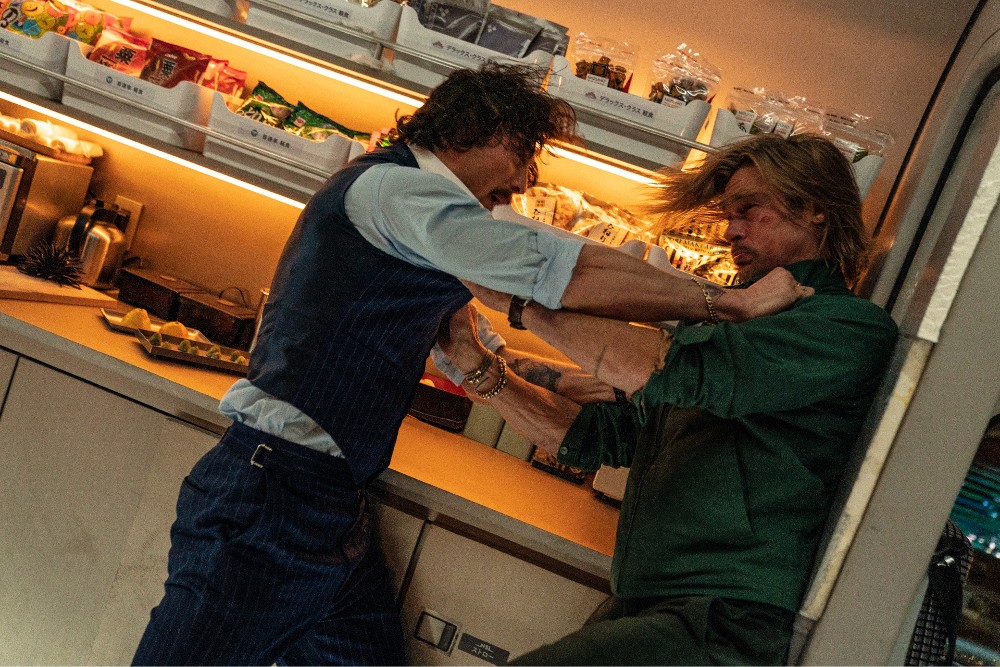
David Leitch‘s action-thriller Bullet Train has been in theaters for a few weeks now, and though the star-studded cast is likely what has been driving audiences to theaters, once audiences have seen the movie, they’re likely to appreciate the film’s marvelous production design as much as its talented ensemble.
Production Designer David Scheunemann was responsible for designing the high-speed Shinkansen train at the center of this action movie, which marks his fourth collaboration with Leitch. They previously worked together on Atomic Blonde (2017), Deadpool 2 (2018), and then, Fast & Furious Presents: Hobbs & Shaw (2019).
There’s a lot more to the “bullet train” of the title since, clearly, there was no way that Leitch could stage all of the movie’s elaborate fight sequences on an actual moving train, so Scheunemann was tasked with designing an environment that could be as interesting and cinematic as the movie’s characters and fast-paced story. As it turns out, while Bullet Train takes place entirely in Japan, Leitch didn’t actually shoot anything in Japan, which provided yet another challenge for the veteran production designer.
Scheunemann comes from the same Wachowski school of filmmaking as Leitch, the two of them having worked with the Matrix filmmakers on movies such as Ninja Assassin, Speed Racer, and Cloud Atlas, with Leitch doing stunts and Scheunemann working in the art department.
A few weeks ago, Below the Line hopped on the phone with Scheunemann to talk about everything that went into designing Bullet Train and how the Brad Pitt movie demanded his A-game.
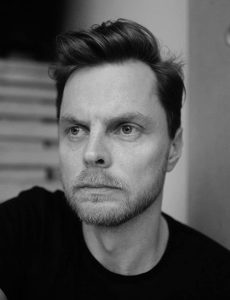
Below the Line: Bullet Train looks amazing, and I know you’ve designed all four of David Leitch’s movies, so how did you first connect with him and become his Production Designer?
David Scheunemann: David and I know each other basically from… I don’t remember the year anymore… but both of us basically worked on Wachowski movies, and that’s how we met and became connected in this industry. When he started moving on to directing and came to Europe to do Atomic Blonde, we reconnected, and since that day, basically, we have spent a lot of time together on three movies.
BTL: I was amazed to learn that Bullet Train wasn’t filmed in Japan, or was a little bit filmed for plates for VFX to use?
Scheunemann: Bullet Train was really filmed in L.A. exclusively. The entire movie was basically filmed on the stages in Culver City on the Sony lot. We prepped and did the movie in L.A., for the simple reason that we couldn’t go to Japan. It was the first pandemic year, [so] everything was completely locked down. It was really difficult, actually, anyway, [as] traveling was a difficult task at that time, and we weren’t really able to get there.
Unrelated to this movie, we’ve been to Japan before, so we had a sense [of] the place, and then for the entire team and especially in my department, we had a cultural adviser and also a cultural translator, that helped [us] basically navigate through research for the movie.
We did have a plate unit, a Tokyo-based plate unit that we remote-directed from L.A., and they went out for us and shot plates.
BTL: What was the timeframe for the movie? Was everything done during COVID or were you prepping beforehand?
Scheunemann: We were actually prepping another movie that had to shut down due to COVID, and then Bullet Train came up in late spring 2020, and then I prepped with my team for quite some time [in] Berlin, so we did a remote prep for a little while, and then we met in L.A. for the rest of the prep and shot there.
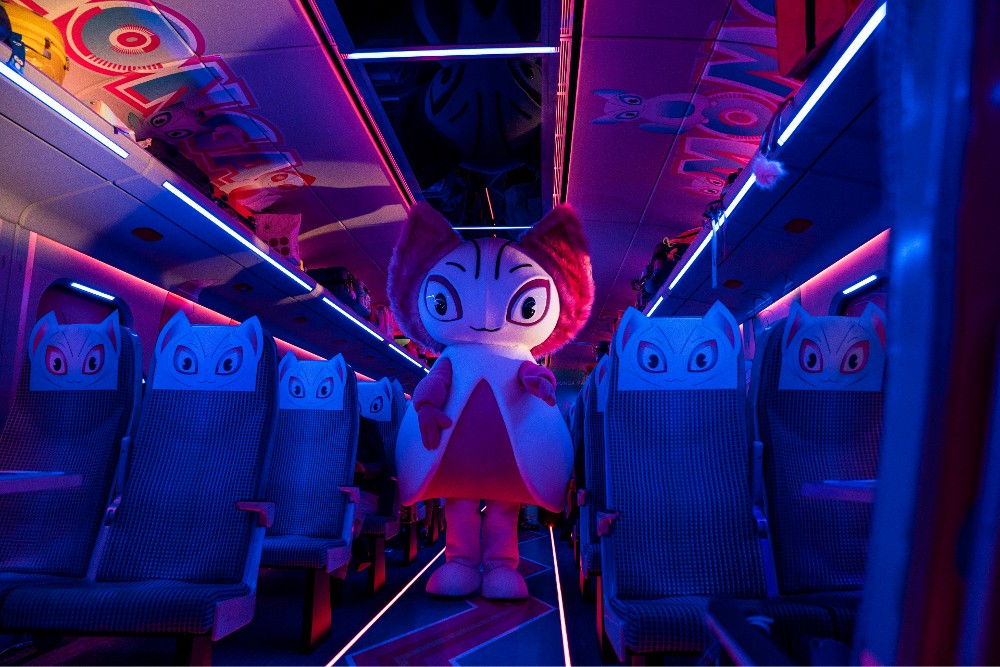
BTL: What sort of research were you able to do, particularly for the train, but also the stations? Did you have someone in Japan who could take and send you photos, or did you have to use books and other means to see what they should look like?
Scheunemann: I’m usually doing cross-media and research, so it’s a mix of web searches, but then also, with the help of a Japanese translator, proper web searches into the depths of the Japanese internet where you, as a Western person, without the Japanese language, can’t really reach into.
I’m an architect by training. I studied architecture before I started to do movies, so I have a natural interest in architecture, and I do have a broad interest in Japanese architecture, so I do have a foundation there. The whole thing, basically, regarding the train and how it looks, or how the entire movie looks, was really not about creating reality. We didn’t want to end up in some sort of documentary setting.
The original Japanese trains are interesting, but they’re not interesting in a cinematic sense. As the story developed with very saturated characters, I really needed to create something very specific, very moody, and very refined for this train. Also, something [that] was really great fun was that Momomon [mascot] family car on the train. The creation of the character goes back to the process of early development prep, when we were creating that character, actually just as a mascot, and it found its way into the script while we were basically designing the movie.
BTL: Over the years, there have been many train-based movies — Murder on the Orient Express and Snowpiercer to name just two — but I wasn’t sure if this train was based on a real train that runs in Tokyo or not.
Scheunemann: It has its roots in the original train, but it’s a completely original design for the movie.
BTL: I have to assume that goes doubly for the interiors because you have so many different cars that look so different from each other. Were those based on anything from real Japanese trains?
Scheunemann: Honestly, not really. When you say “based,” they’re based on the cultural background of, let’s say, the design and foundations of how you would separate [the] first-class car from an economy-class car. That’s just design work, but then that Momomon family car was kind of fun. That comes back to something I found in my research. There’s an actual museum train existing in Japan that basically rides on a route, but the train is actually a museum with thematic cars, but it’s used on a regular route, so you can basically hop on it with a ticket. Finding that train initiated an idea for this car.
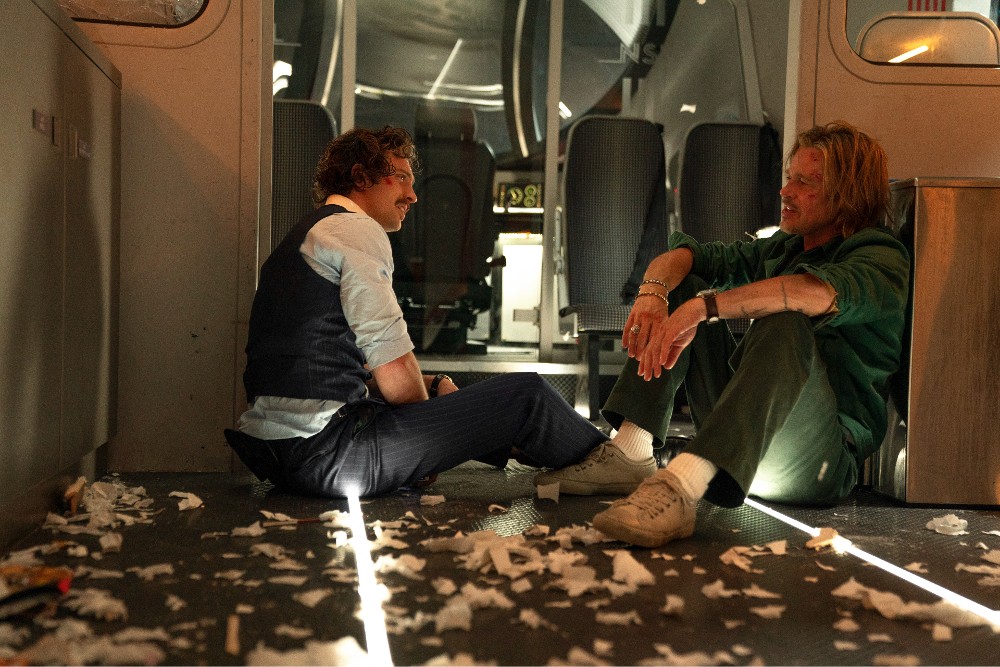
BTL: As far as building the train on sound stages, were the different cars connected, or were they all on separate sets?
Scheunemann: We had them connected. We had two train cars connected with galleys, bathrooms, all that stuff. We were able to wheel in the train cockpit and connect it to the train car, so we were really able to do, probably, 20 feet of proper geography, or even a little bit more. That’s what we built on the stage, and of course, we had to redress and rebuild certain things in certain states.
We had another exterior-interior train that we built as a composite together with a station. So we had a station layout that we re-dressed many times for all the stations in the movie. We tried to film the arrival of trains [at] the station as real as we could, so we had a real driving train on a special effects rig that approached the station. It actually gave the visual effects people a great reference on how they should continue.
BTL: How many sound stages were you using at the busiest time during production?
Scheunemann: We were using one of the largest stages on the Sony lot, and then two other ones where we were just swapping out sets. We were building sets on the two other ones, and the big stage on the Sony lot we used, basically, for the trains and the stations. We were able to fit both in there.
BTL: You mentioned dressing the different cars. Who was the set decorator on your team, and what was involved with dressing the cars, and also, how were things split between set dressing and props when almost anything in any car could be used as a weapon or a prop?
Scheunemann: In this movie, pretty much everything is manufactured. Apart from a huge shopping tour through Japan from a Japanese shopper who basically worked for us and sent stuff to us, Elizabeth Keenan, the Set Decorator, was great at building a cultural foundation with proper Japanese stuff — everything from books to magazines to sweets and drinks. Everything that’s being sold in the station or on those carts in the train, everything is [an] actual product that we shipped in from Japan.
But everything else is manufactured, so she really ended up being almost like an interior design manufacturer, which was an interesting process, also, for her. It wasn’t really in the traditional sense of 50 sets or more that you dress for a movie. We had some sets for all those flashbacks, and also some really good sets we shot in L.A. for the town. For the train itself, that was really more like traditional design manufacturing, basically.
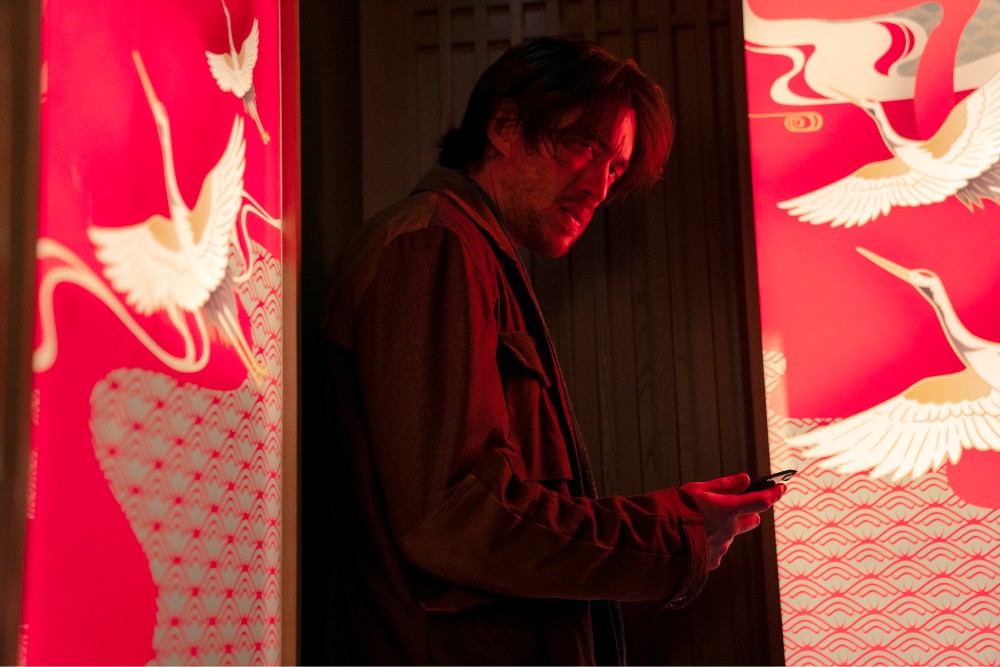
BTL: I don’t want to spoil the movie for anyone, but the last bit of the movie has the train traveling through a Japanese village, so was that also something that was constructed, or was it a mix of stage work and visual effects?
Scheunemann: It’s a combination. We did build a slightly bigger outdoor backlot, where we were able to stage most of the stuff and also film without an extension. So, the standoff, that’s basically happening on the set, not far away from the Sony lot. But then, obviously, the way we shot it, and then when they walk down the hill, that’s basically when we had to use extensions.
BTL: Are you able to generally work with some of the same team in the art department for each movie you’ve done with David, or is it really based on where the production is located?
Scheunemann: It’s a mix. [As for] my core creative team, there are some people [who] I work with regardless [of] where I have to produce the movie. They’re based out of different cities on the planet. My key illustrator, Marcos Weiss, is based in Berlin. My graphics designer, Liliana Lambriev, is based in Berlin. There’s another illustrator who is based in Trondheim in Norway. There are people from Melbourne I’m working with, people in L.A. That’s my core creative team, and then I crew up wherever I have to go, basically, to do the work. Art directors and set decorators, you usually try to find them locally, wherever you go, because that’s a job where you really want people with a certain knowledge of the local industry and how it works.
BTL: When I spoke to Greg Rementer, the stunt coordinator, he talked about creating fights in close quarters and how that sometimes involved destroying your sets. I do want to hear your side of things, knowing that was likely to happen. Do you have multiple windows and other things to make it easy to replace things as they’re being broken?
Scheunemann: Yeah, of course. That’s usually planned quite well. Of course, if you do an action-thriller, you destroy stuff. That’s definitely the nature of this genre, so everything just gets planned and multiplied to the needs of the scenes, basically.
BTL: COVID has affected production adversely due to all the testing and people having to isolate and work in zones, but is there anything that COVID has forced you to do that you’d actually like to continue with once the pandemic (hopefully) subsides?
Scheunemann: There’s a much bigger openness now for remote prep with people, which is great, because I’m a huge fan of modern technology, and I do believe that people don’t have to be in one spot all the time. I mean, this is a very personal industry, so you kind of have to meet up and there are certain things you can only figure out and resolve creatively when you’re there in person. But actually, you don’t need to be in [the same] place all the time. This is definitely changing since COVID, and I think people appreciate it. Also, people from the design team can just stay in other places or stay home and work from there, and the quality of the work is not dropping from that. I think that has brought very good [upgrades] to our work life, actually, since that time.
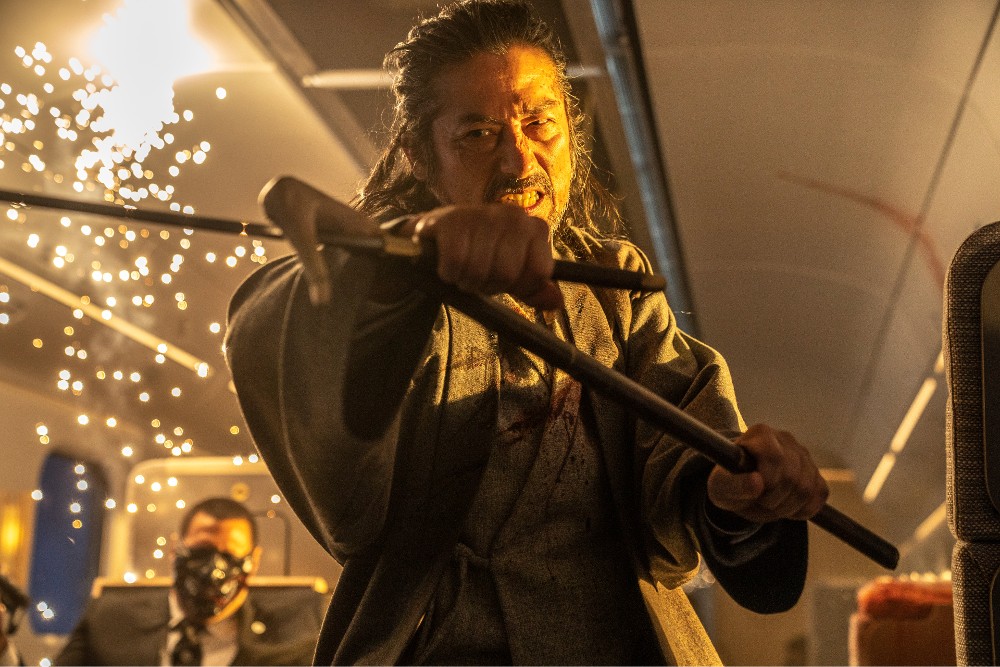
BTL: Do you typically use computers during the design process, and does that carry through to the actual construction?
Scheunemann: I do sketch but beyond that, I’m fully digital, so I’m illustrating myself [and] I’m building some visual treatments. I’m also doing 3D work, if necessary, especially when I develop movies. With a little team and when I have the time to be creative, I’m using all those tools, and that’s my process. I’m pretty much digital.
BTL: I saw that you recently did a Liam Neeson movie with Nimród Antal, who I’ve known for quite some time. Was Retribution something you also did during COVID, right after Bullet Train?
Scheunemann: I came back from L.A. to Berlin, and he connected in Verona and wanted me to help them because I know [Producer] Andrew [Rona] from other movies, [so] they asked me to help them on Retribution, which I ended up doing.
BTL: Are you working on anything now? I think someone mentioned that you’re in Australia…
Scheunemann: I am, actually. I’ve been developing a movie. You can read it in my credits, but I’m not officially allowed to talk about it. You can see it on my IMDB. [Note: It’s probably David Leitch’s next film, The Fall Guy, starring Ryan Gosling and Emily Blunt.] I’m actually here [in Australia] right now. I’ve been doing other movies in between. What I mainly did last year was, I [tried] to put people out of my own camp forward to start production designing. I did a little more of a consulting producing role, so I did that last year, and I did that, more or less, on three projects. And then I started developing this movie that I’m doing this year, and basically, just went back and forth between Berlin and Sydney. And now, I have to be here.
BTL: Are you able to work on two movies at the same time, even if it’s doing prep on one while still being involved with visual effects on the post side of things on another movie?
Scheunemann: There’s still some design work that needs to be done. My work life is usually several projects blending into each other. There’s always a time of focus — let’s say, the last 10 weeks before you shoot something. And then during the shoots, your [head is] balanced, but [it’s] around [that] time [when] you definitely have to do [think about] other things [and] new projects.
Bullet Train is still playing in theaters nationwide. All photos courtesy of Scott Garfield/Sony Pictures.





